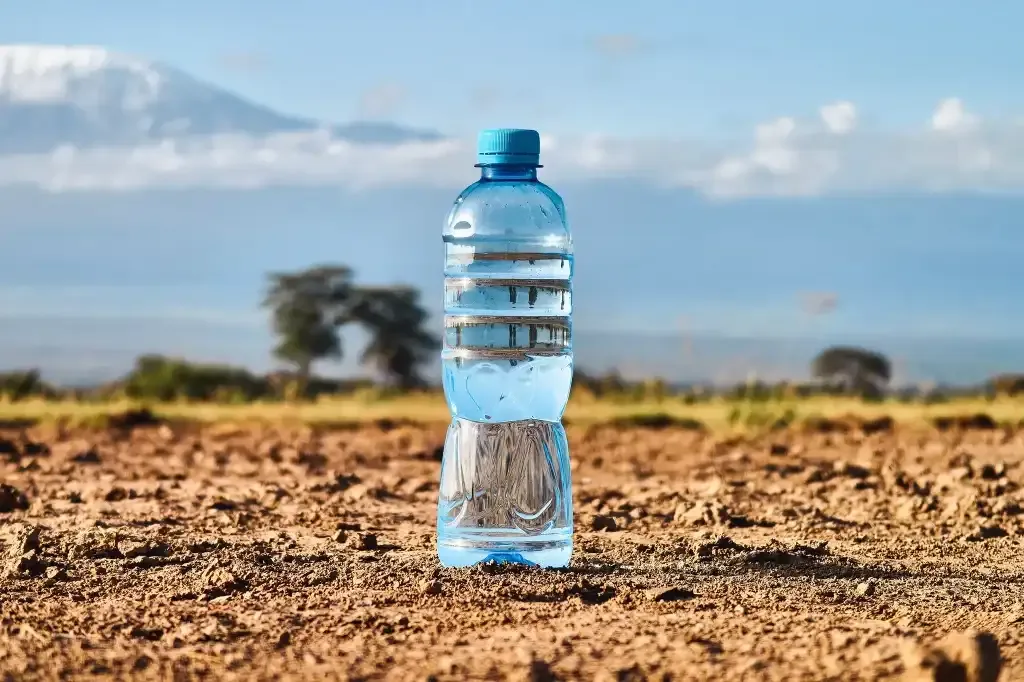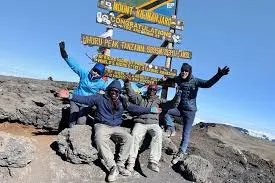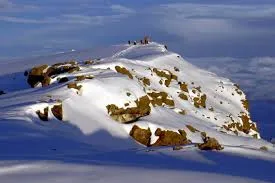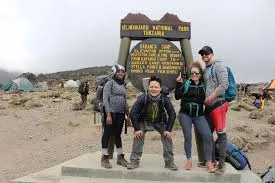Hydration Tips for Trekking Kilimanjaro: Stay Safe & Energized
To stay safe and energized while trekking Kilimanjaro, drink 3 to 4 liters of water each day. Carry a hydration bladder for easy access on the trail. Use electrolyte powders or rehydration salts to replace minerals lost through sweat and to reduce fatigue. Combine hydration with small, frequent snacks like trail mix or energy bars to keep your energy up during the climb. Our expert guide covers everything from understanding water intake to picking the right equipment, ensuring you stay safe, energized, and ready to summit Africa’s highest peak.
Plan Your Kilimanjaro Trek Now
Why Hydration is Critical for Kilimanjaro
Hydration is critical on Kilimanjaro because your body is working harder at high altitudes, where the air is dry and oxygen is thin. Staying properly hydrated helps prevent altitude sickness, keeps energy levels steady, and supports overall physical performance. Simply put, water isn’t just a comfort—it’s essential for making it safely to the summit. With temperatures ranging from 80°F at the base to 0°F at the summit, and altitudes increasing dehydration risks, proper hydration is non-negotiable. Dehydration can lead to fatigue, altitude sickness, and reduced performance, jeopardizing your summit success. Capable Africa Tours emphasizes drinking 3–5 liters of water daily, using safe purification methods, and monitoring hydration signs to keep you strong throughout your 6–9 day trek.
How Much Water Do You Need?
Your body loses water faster at high altitudes due to increased respiration and lower humidity. A general guideline is to consume:
- Lower altitudes (6,000–10,000 ft): 3–4 liters per day.
- Higher altitudes (10,000–19,341 ft): 4–5 liters per day, especially on summit day.
- Breakdown: 1 liter before trekking, 1–2 liters during the day, and 1–2 liters at camp.
Water Intake by Trekking Route
| Route | Duration | Daily Water (Liters) | Key Hydration Challenge |
|---|---|---|---|
| Marangu Route | 5–6 days | 3–4 liters | Humid rainforest zone increases sweat loss |
| Machame Route | 6–7 days | 4–5 liters | Longer trekking days demand more water |
| Lemosho Route | 7–8 days | 4–5 liters | Remote trails require carrying extra water |
| Rongai Route | 6–7 days | 3–4 liters | Drier northern side increases dehydration risk |
Hydration Gear Checklist
- Hydration Bladder (2–3 liters): CamelBak or Platypus for easy sipping. Insulated tubes prevent freezing above 15,000 feet. Weight: ~200g.
- Reusable Water Bottle (1 liter): Nalgene or Hydro Flask for backup and camp use. Weight: ~150g.
- Water Purification Tablets: Aquatabs or Katadyn Micropur for treating stream water. Pack 50 tablets for a 7-day trek.
- UV Purifier or Filter: SteriPEN Ultra or Sawyer Mini for quick, chemical-free purification. Weight: ~100–150g.
- Insulated Bottle Sleeve: Prevents water from freezing on summit night. Example: Hydrapak Stash.
- Electrolyte Tablets: Nuun or Hydralyte to replenish salts lost through sweat. Pack 20–30 tablets.
Hydration Needs by Altitude
| Altitude (ft) | Water Loss Rate | Recommended Intake (Liters) | Risks of Dehydration |
|---|---|---|---|
| 6,000–10,000 | Moderate (sweat, respiration) | 3–4 | Fatigue, headaches |
| 10,000–15,000 | High (faster breathing) | 4–5 | Altitude sickness, dizziness |
| 15,000–19,341 | Very high (low humidity) | 4–5 | Severe altitude sickness, hypothermia |
Why Hydration Matters for Kilimanjaro Success
Dehydration on Kilimanjaro can turn a dream trek into a nightmare. At high altitudes, your body works harder to oxygenate, increasing water loss through breathing and sweat. Without proper hydration, you risk altitude sickness, reduced stamina, and even life-threatening conditions. Capable Africa Tours’ data shows that 95% of our successful summiteers in 2024 prioritized hydration, drinking 4–5 liters daily and using electrolyte supplements. Proper hydration boosts energy, aids acclimatization, and keeps you focused on reaching Uhuru Peak.
Key Benefits of Proper Hydration
- Prevents Altitude Sickness: Adequate water intake supports oxygen delivery, reducing headache and nausea risks.
- Boosts Energy: Hydration maintains muscle function, preventing cramps and fatigue during 6–8 hour trekking days.
- Enhances Acclimatization: Drinking enough water helps your body adjust to altitude changes across Kilimanjaro’s zones.
- Protects Against Cold: Proper hydration improves circulation, keeping you warmer in sub-zero summit conditions.
- Improves Recovery: Hydrating at camp speeds up muscle recovery for the next day’s trek.
Learn Hydration Strategies for Kilimanjaro
Watch this video from Capable Africa Tours to discover practical hydration tips, including how to purify water and manage intake during your Kilimanjaro climb.
Top Hydration Tips for Kilimanjaro
Staying well-hydrated is one of the most important factors for success on Kilimanjaro. Aim to drink small, steady sips throughout the day rather than waiting until you feel thirsty. Use a hydration bladder for hands-free access and carry a backup water bottle in case it freezes at higher altitudes. Treat or filter water as needed, and consider adding electrolyte tablets to maintain your body’s salt balance. Below is a list of the top hydration tips to keep you energized, safe, and performing your best on your 6–9 day trek with Capable Africa Tours.
- Sip, Don’t Gulp: Drink small amounts (100–200ml) every 15–20 minutes to maintain steady hydration without overloading your stomach.
- Purify All Water: Use tablets, UV purifiers, or filters for stream water. Capable Africa Tours provides boiled water at camps for safety.
- Add Electrolytes: Use 1–2 tablets (e.g., Nuun) daily to replace sodium and potassium lost through sweat, especially on summit day.
- Monitor Urine Color: Aim for pale yellow urine. Dark yellow or orange indicates dehydration, so increase water intake.
- Insulate Hydration Gear: Use insulated tubes and bottle sleeves to prevent freezing above 15,000 feet, where temperatures drop to 0°F.
- Plan for Summit Day: Carry 3–4 liters in a hydration bladder and bottle. Start full and refill at the last camp (Barafu).
- Stay Disciplined: Set a hydration schedule with your guide to ensure you drink 4–5 liters daily, even if you don’t feel thirsty.
Common Hydration Mistakes to Avoid
- Underestimating Water Needs: Drinking less than 3 liters daily increases dehydration and altitude sickness risks.
- Skipping Purification: Unpurified stream water can cause giardia or other illnesses, ruining your trek.
- Ignoring Electrolytes: Plain water doesn’t replace salts lost through sweat, leading to cramps and fatigue.
- Freezing Gear: Uninsulated bladders or bottles can freeze on summit night, leaving you without water.
Ready to Summit Kilimanjaro with Confidence?
With Capable Africa Tours, climb Mount Kilimanjaro fully prepared with expert hydration strategies and top-tier guidance. Our all-inclusive packages include boiled water at camps, experienced guides, and tailored itineraries for a safe, unforgettable adventure.
- 98% summit success rate with expert hydration monitoring
- Eco-friendly treks supporting local Tanzanian communities
- Gear rentals for hydration bladders, bottles, and more
- Customizable routes for all fitness levels (Marangu, Machame, Lemosho)
- Comprehensive packages with meals, transfers, and safety protocols
Limited spots available for Kilimanjaro treks — book now to secure your summit journey!
Plan Your Trek Now


